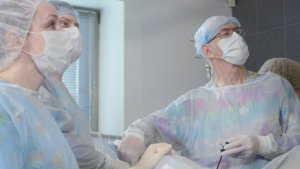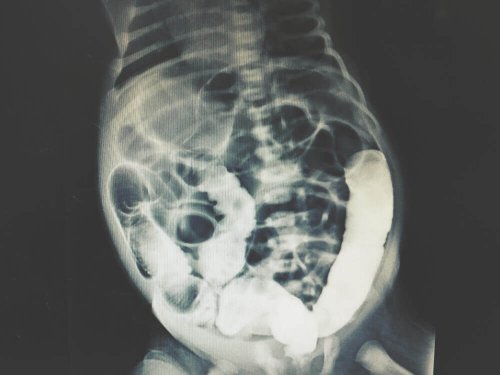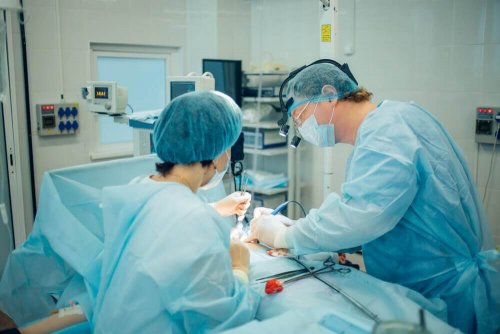What Is Diagnostic Peritoneal Lavage?


Written and verified by the doctor Nelton Abdon Ramos Rojas
Generally, a medical team uses the term “diagnostic peritoneal lavage” to refer to a common medical procedure. It consists of performing a physical examination of the abdomen that may be useful for diagnoses. Likewise, doctors may also use it therapeutically for certain clinical conditions.
Peritoneal lavage involves a highly reliable medical examination. Plus, it produces a minimal amount of false positives or other errors. They usually use it along with other diagnostic medical imaging and can take place as a CT (computerized tomography) scan or MRI (Magnetic Resonance Imaging).

“X-ray peritoneal dialysis”.
The Peritoneum
The peritoneum consists of a thin and very resistant membrane which is located in the abdominal cavity. Its two layers join to the external face of the viscera (visceral peritoneum) and to the inside of the abdomen (parietal peritoneum).
This includes the peritoneal cavity, which stores a small amount of fluid. Thus, the rubbing or friction between the different layers decreases because it acts as a lubricator.
Typically, these structures provide support and protection for the organs located in the abdomen. However, their duties may be affected if the peritoneum has some alteration due disease or trauma.
Read this article, too: How to Treat Abdominal Bloating
Diagnostic Peritoneal Lavage Procedure
First, it’s important to note that doctors may not always recommend diagnostic peritoneal lavage. For example, if the patient has gone through numerous abdominal operations, it’s not the best diagnostic tool. Obesity, pregnancy, a severe state of cirrhosis, and blood clotting problems, among other factors, also may impact the patient’s ability to have this procedure.
That said, let’s take a look at the procedure.
- First, the medical team and nursing staff will prepare all the necessary materials for intervention. Also, they must follow the habitual rules of hygiene and explain the procedure to the patient.
- Before they begin with the diagnostic peritoneal lavage, they will insert a bladder catheter and nasogastric tube. This is to ensure the reliability of the test.
- Afterward, they should disinfect the future incision area. Then, they should apply proper anesthesia. This was, the subject will not feel intense discomfort during the washing technique.
- Then, they perform an incision with a scalpel through different layers of tissue in order to reach the peritoneum. By using spacers, the group of specialists can get a better view of the membrane. Also, they should pay attention to the hemostasis to prevent the blood from flooding the exposed abdominal cavity.
- Afterward, they make a small incision in the peritoneum.
- They insert a peritoneal dialysis catheter through the opening. Once inserted, a syringe must be attached to the catheter to perform the suction.
- If there are any blood, stool, bile, urine or intestinal fluid samples, and the result is positive, they will perform a laparotomy.

Check out this article, too: Try This Effective Diet to Reduce Your Abdomen
Washing Technique
Sometimes, they don’t get the desired results. If so, the medical team will then administer saline into the cavity. Then, they allow the liquid to spread.
After waiting a few minutes, they drain the cavity liquid naturally (with the help of gravity). This way, they can get a series of samples. Then, they can send them for analysis in a specialized center such as a laboratory.
Depending on the results, the group of experts can determine the cause the abdominal problems. Also, they can conduct tests to get internal images of the abdominal region. This way, they can facilitate the diagnosis.
After the procedure, they place a firm bandage is placed above the wound. This is to promote healing and prevent possible complications or infections.
All cited sources were thoroughly reviewed by our team to ensure their quality, reliability, currency, and validity. The bibliography of this article was considered reliable and of academic or scientific accuracy.
- Schultz, D. J., & Weigelt, J. A. (2003). Diagnostic peritoneal lavage. Operative Techniques in General Surgery. https://doi.org/10.1016/S1524-153X(03)70005-0
- Jansen, J. O., & Logie, J. R. C. (2005). Diagnostic peritoneal lavage – An obituary [5]. British Journal of Surgery. https://doi.org/10.1002/bjs.5222
- Whitehouse, J. S., & Weigelt, J. A. (2009). Diagnostic peritoneal lavage: a review of indications, technique, and interpretation. Scandinavian Journal of Trauma, Resuscitation and Emergency Medicine. https://doi.org/10.1186/1757-7241-17-13
This text is provided for informational purposes only and does not replace consultation with a professional. If in doubt, consult your specialist.








